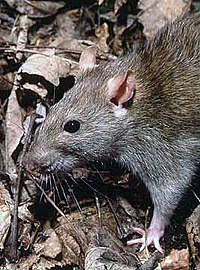
Awakenings in rats by ultrasounds: A new animal model for paradoxical kinesia
Sign Up to like & getrecommendations! Published in 2018 at "Behavioural Brain Research"
DOI: 10.1016/j.bbr.2017.09.021
Abstract: Abstract Paradoxical kinesia refers to a sudden transient ability of akinetic patients to perform motor tasks they are otherwise unable to perform. The mechanisms underlying this phenomenon are unknown due a paucity of valid animal… read more here.
Keywords: kinesia; khz usv; paradoxical kinesia; animal model ... See more keywords

Limited generalizability, pharmacological modulation, and state-dependency of habituation towards pro-social 50-kHz calls in rats
Sign Up to like & getrecommendations! Published in 2021 at "iScience"
DOI: 10.1016/j.isci.2021.102426
Abstract: Summary Communication constitutes a fundamental component of mammalian social behavior. Rats are highly social animals and emit 50-kHz ultrasonic vocalizations (USV), which function as social contact calls. Playback of 50-kHz USV leads to strong and… read more here.
Keywords: state; khz; khz usv; habituation ... See more keywords

Mania-like elevated mood in rats: Enhanced 50-kHz ultrasonic vocalizations after sleep deprivation
Sign Up to like & getrecommendations! Published in 2019 at "Progress in Neuro-Psychopharmacology and Biological Psychiatry"
DOI: 10.1016/j.pnpbp.2018.07.002
Abstract: Abstract Mania is characterized by elevated drive and mood but animal models of mania have often neglected elevated mood. Ultrasonic vocalizations (USV) of 50‐kHz emitted by rats are thought to index the subject's positive affective… read more here.
Keywords: khz usv; elevated mood; ultrasonic vocalizations; usv emission ... See more keywords

Response Calls Evoked by Playback of Natural 50-kHz Ultrasonic Vocalizations in Rats
Sign Up to like & getrecommendations! Published in 2022 at "Frontiers in Behavioral Neuroscience"
DOI: 10.3389/fnbeh.2021.812142
Abstract: Rats are highly social animals known to communicate with ultrasonic vocalizations (USV) of different frequencies. Calls around 50 kHz are thought to represent a positive affective state, whereas calls around 22 kHz are believed to… read more here.
Keywords: khz; khz usv; ultrasonic vocalizations; natural khz ... See more keywords